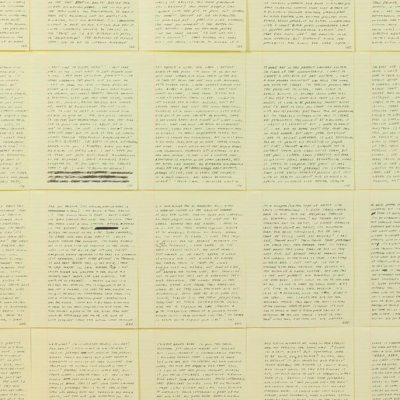International Exhibition of Modern Art Exhibition catalogue (1913), Association of American Painters and Sculptors, Inc. Courtesy the New-York Historical Society

Nothing so pleases exhibition attendees as the realisation their taste is more sophisticated than that of previous generations. The current show at the New-York Historical Society’s premises on Manhattan’s Upper West Side provides an opportunity to experience this emotion. ‘The Armory Show at 100: Modern Art and Revolution’ uses the centenary of the infamous ‘International Exhibition of Modern Art’ held downtown at the Armory Building to explore changes in public attitude to the avant-garde.
The 1913 show has long since achieved mythic status, equivalent to that of the contemporaneous Paris premiere of Stravinsky’s Le Sacre du printemps, as an occasion when the urban bourgeoisie took umbrage at what was being proffered to them and revolted, albeit in a well-bred fashion. It is certainly true that at least some of the 87,000 visitors to the show did not care for what they saw there, and very possibly a few of them went with the intention of being appalled. One of the last galleries was seemingly nicknamed the ‘Chamber of Horrors’ since it was replete with Cubist work including Duchamp’s 1912 painting Nude Descending a Staircase. This inspired one of the more entertaining satires of the event: a cartoon in the Evening Sun newspaper with the self-explanatory title The Rude Descending a Staircase (Rush Hour at the Subway).
Nude Descending a Staircase (No. 2) (1912), Marcel Duchamp Philadelphia Museum of Art, The Louise and Walter Arensberg Collection, 1950 © 2013 Artists Rights Society (ARS), New York / ADAGP, Paris / Succession Marcel Duchamp

Much less amusing was a painting produced by society muralist Robert W Chanler, then renowned for his brief and tempestuous marriage to Italian opera singer Lina Cavalieri. Parody of the Fauve Painters depicts Matisse as a seated ape surrounded by canvases and basking in the admiration of aesthetes. One might imagine Chanler was taking revenge after being excluded from the show. In fact he did exhibit at the Armory, his contribution being an etiolated view of a leopard attacking deer. This is one of the revelations of the Historical Society centenary celebration: more than half of the pieces in the 1913 show were by American artists. Far from being a display of exclusively foreign art, the event was clearly intended to promote the merits of what was then being produced at home.
Outside of the United States, the best-known American artists of the period tend to be the likes of Childe Hassam and Robert Henri, still working in a distinctly Impressionist vein. But this exhibition makes it plain there were other painters who had absorbed what had since happened in France, the likes of Charles R Sheeler and Marsden Hartley, both of whom were indebted to Cézanne, and Morton Livingston Schamberg whose 1912 Study of a Girl might have come straight from Paris.
In the original exhibition American and non-American works were shown alongside each other, the organisers keen to present the former as equal to the latter. The pity is that this approach has not been adopted in the present show, with the first room devoted to American contributors before one moves on to see paintings and sculpture by such luminaries as Matisse, Picabia, Picasso, Gauguin, van Gogh and so forth.
It has to be said that popular successes at the time, among them Augustus John and Odilon Redon, today look distinctly feeble in this company. But their presence was, and is, necessary to offer a balanced view of diverse trends at the time. This is another of the surprises of the Historical Society exhibition: the Armory Show was a more balanced and less revolutionary occasion than it has subsequently been esteemed, with even the likes of Honoré Daumier (who had died in 1879) included in 1913 for the sake of historical context. Not so great a shock therefore, but certainly a revelation.
‘The Armory Show at 100: Modern Art and Revolution’ is at the New-York Historical Society until February 23rd 2014.




